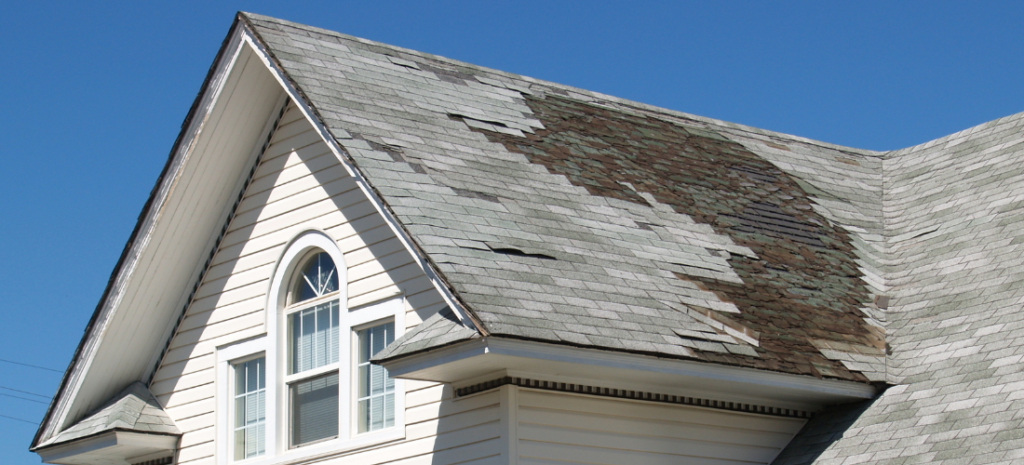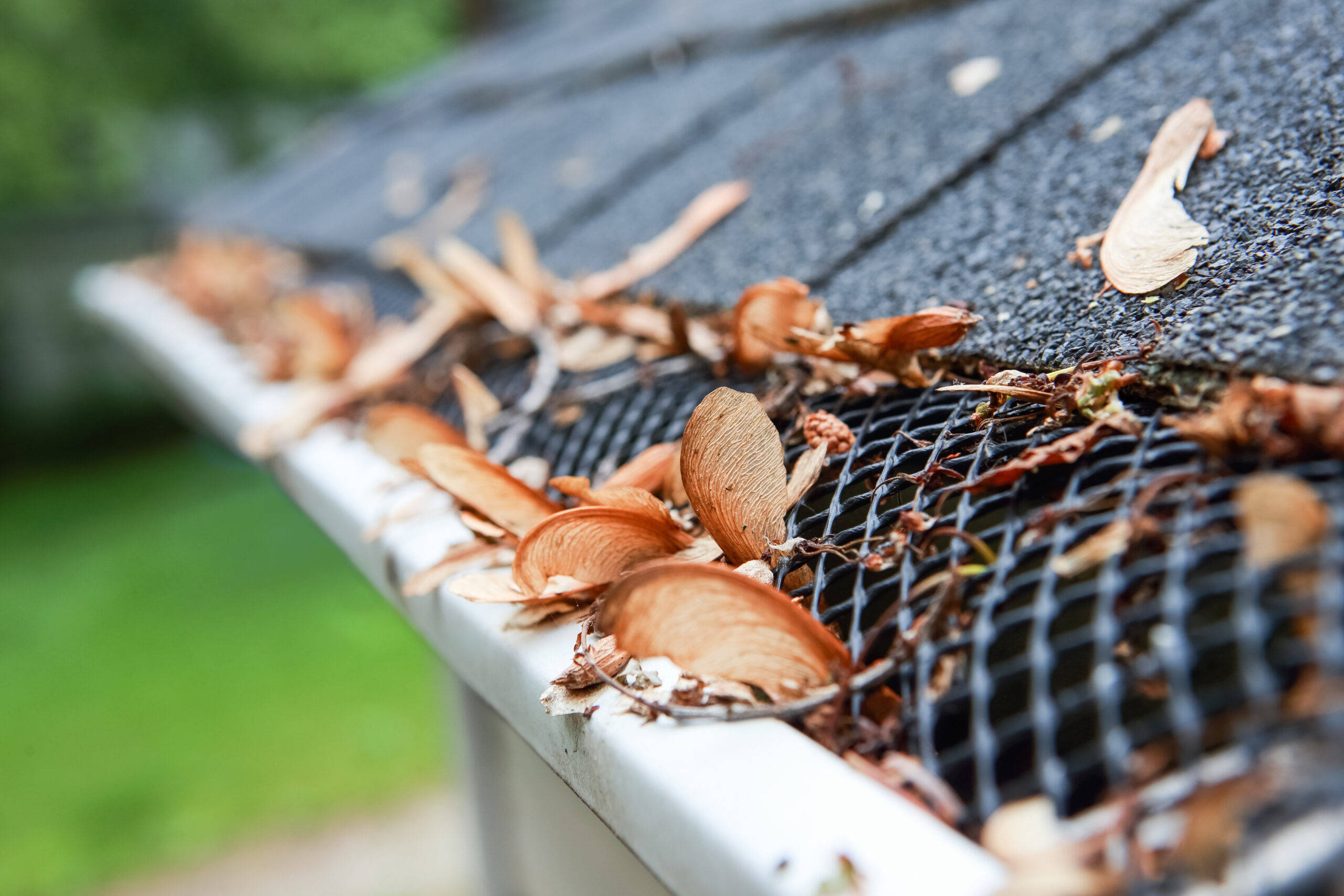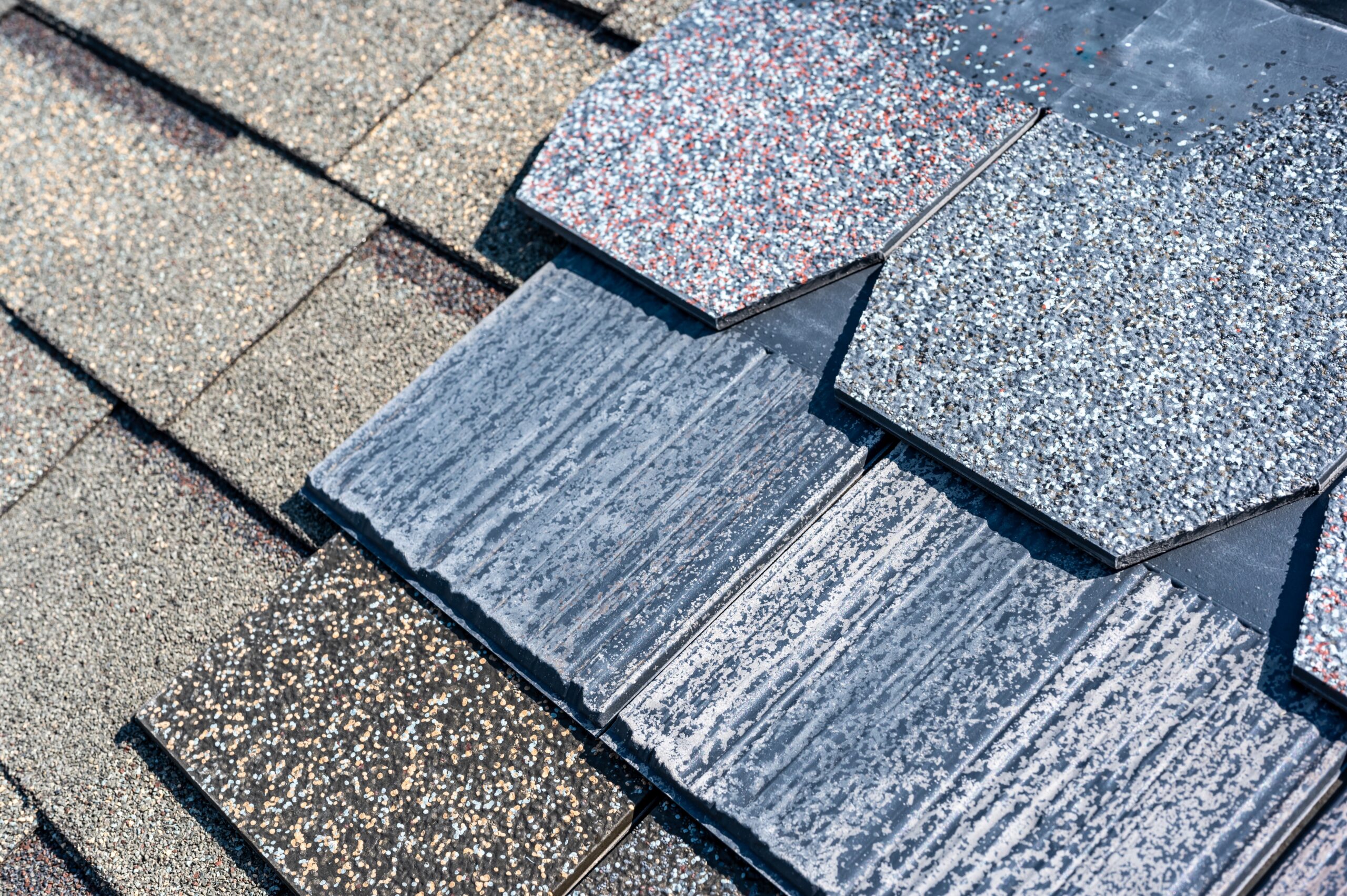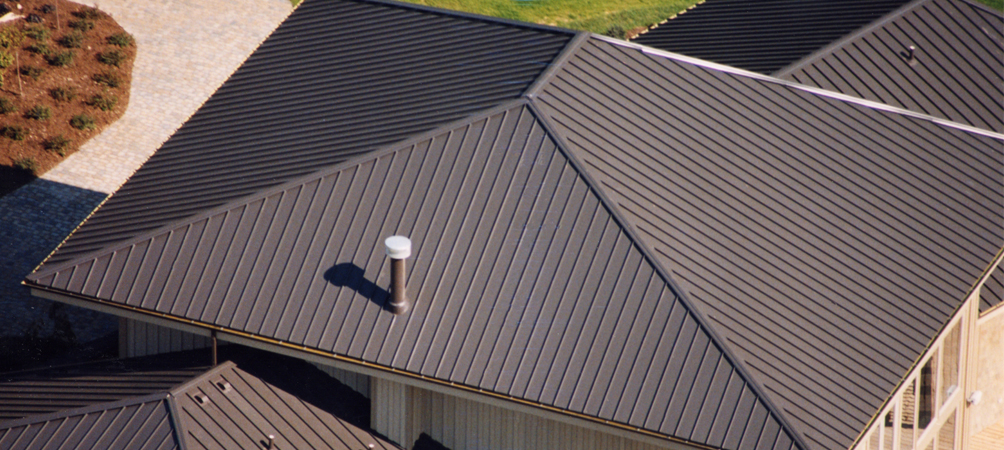
Roof storm damage can occur after harsh winds, pouring rain, heavy snow, or downed trees. The stress of experiencing roof damage from a storm can leave you wondering what to do next. Map out a plan in advance so you’re prepared to face any potential fallout from a storm with an actionable recovery plan. Follow these recommended steps to stay safe and get your roof repaired as soon as possible.
Ensure Safety First
Your first priority following storm damage is to stay safe. Stay away from hazards like downed power lines and broken glass. Avoid electrical devices if your home is flooded.
Document the Damage
The shock of a severe storm can leave you wondering what to do after roof damage. After determining it’s safe, you should check for damage and document anything you find. Take pictures and video if possible. Record the date of the damage and keep copies of all documentation and correspondence from your insurance company and roofing contractor.
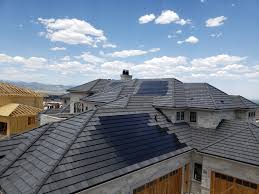
Contact a Roofing Professional for an Inspection
It’s not always possible to spot all damage through an initial roof inspection after a storm. You should also call a professional. An expert roofer knows what to look for and can determine the cause and extent of the damage. You will also need a professional’s verification of the damage to get started on repairs and to receive compensation from your insurance claim.
File an Insurance Claim
Filing insurance claims for roof damage are time-sensitive. Reach out to your insurance agent as soon as possible to start the process. Your agent can guide you through the steps, answer your questions, and help you obtain the necessary documentation. The company may also send its assessor to evaluate the damage. If you wait too long after a storm, your insurance company may have grounds to deny your claim, leaving you responsible for the full cost of repairs.
Roofing FAQs
How Do I Know If My Roof Has Storm Damage?
Look for tell-tale signs of damage, such as missing shingles, accumulated granules in your gutters, water leaks, damaged flashing, or broken gutters and downspouts. Contact a professional right after the storm for an inspection and advice on the next steps.
How Long Does a Typical Roofing Project Take?
Most homeowners insurance policies will cover damage from fallen trees, hail, water, ice, lightning strikes, fire, and wind damage. Check your policy for a complete list of covered perils, limits, and exclusions.
Can I Delay Roof Repairs After a Storm?
No, you should not delay repairs. Doing so can worsen the damage and even make it difficult to file an insurance claim. It’s best to follow the above-recommended steps immediately after a storm to file a claim and get the damage repaired.
How Long Does It Take to Repair a Storm-Damaged Roof?
The time it takes to repair your roof following storm damage depends on the extent and type of damage sustained. Minor issues generally only take a few hours to fix, but extensive damage can take several days to a week. You also need to contact your insurance company immediately to start filing a claim.
Temporary Fixes to Prevent Further Damage
If possible, you can implement emergency roof repair steps to temporarily fix roofing issues while you wait for permanent repairs. This may be as simple as placing buckets under leaks to catch the water or covering a small hole with a tarp. You can also contact your local roofing company for help with emergency repairs while you wait for a service appointment to fix the damage permanently.
Plan for Permanent Repairs or Replacement
After you address the immediate concerns, contact a reputable company to schedule the repairs or roof replacement you need to make your home safe and comfortable again. Your roofer will inspect the damage and discuss your best options and next steps.
If you have experienced roof storm damage, contact Roofing Pups immediately. Whether you require emergency service, minor repair work, or a full roof replacement, we have the expertise to tailor a solution to your needs. We provide a full range of roofing services to Baltimore County, Harford County, Howard County, and Anne Arundel County in Maryland.


